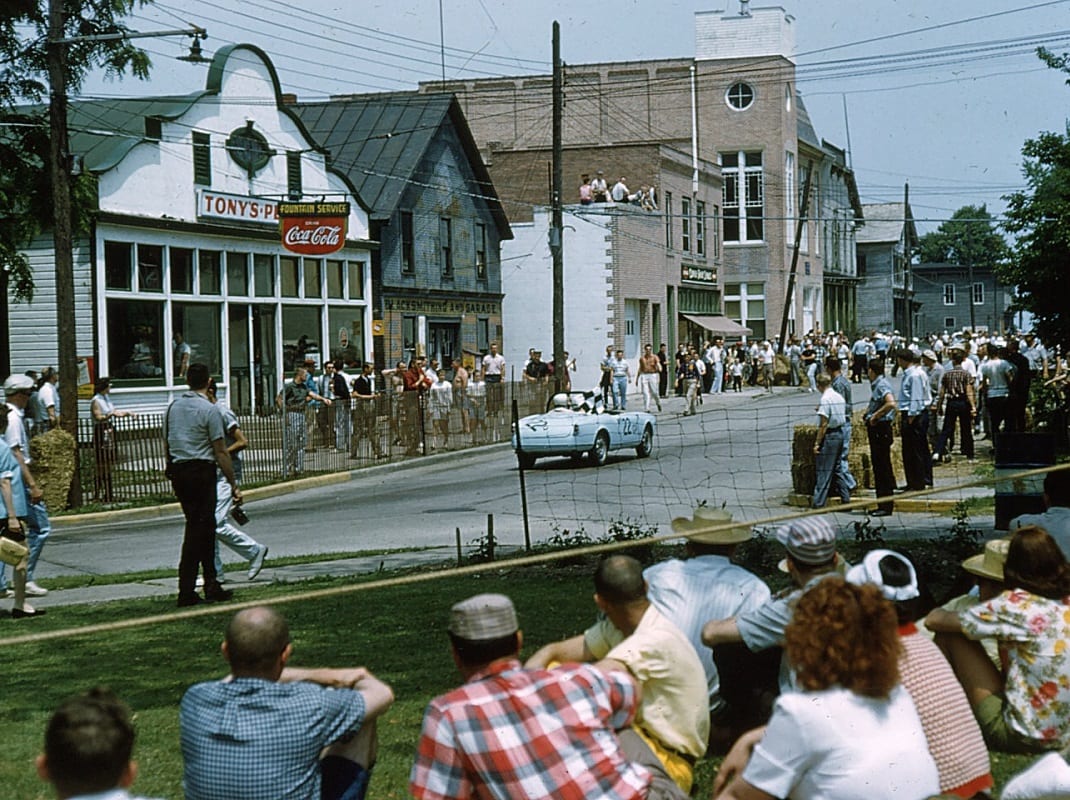In the late summer of 1813, U.S. Naval hero Oliver Hazard Perry put the wind at his back and sailed forth with his squadron of light brigs from the tiny port at Put-In-Bay, Ohio, after the War of 1812 had spilled across the Great Lakes.
Despite losing his flagship to carronade fire, Perry regrouped and unleashed broadsides that battered the Royal Navy’s vessels into submission. The Battle of Lake Erie wrested control of the lakes from the Crown permanently. The next time that the British invaded the Ohio shore, the outcome was considerably less painful.
It was an unlikely locale, a village of less than 200 souls on an island in the shallows of Lake Erie, but Put-In-Bay became a place where sports cars engaged in spirited racing starting in the 1950s, as Americans’ fascination with imported cars swelled.
The offshore Ohio hamlet never achieved the prominence of bigger venues such as Sebring, Torrey Pines or Watkins Glen, but for the time they lasted, the Put-In-Bay meets were heartily anticipated gatherings of the Midwest faithful. Not only that, but the races also stood as a source of civic pride that still endures today.
Most of the competitors were weekend enthusiasts, pure amateurs, but some well-known people also carved corners in the middle of Lake Erie. Put-In-Bay today stands as a vital link to America’s early road racing heritage.
Beyond any dispute, it’s also one of the United States’ most aesthetically pleasurable motorsports venues. Put-In-Bay is located on South Bass Island partway between Sandusky and Toledo in Ottawa County, Ohio.
The island, and its natural harbor, was discovered in 1679 by the French explorer and trader Robert La Salle, who named it Isle de Fleurs after its plentiful wildflowers. The nearest Ohio town of any size is Port Clinton. Put-In-Bay has never had many residents — just 138 as of 2010 — but tourism has defined its existence in recent history, the island served by ferries and commercial aviation.
And despite is remoteness from the mainland, Put-In-Bay has always been a car town. According to Manley Ford, event coordinator and historian of the Put-In-Bay Road Race Heritage Society, more than 200 registered vintage automobiles exist on the island today, even though its land area is less than half a square mile.
That automotive connection persuaded the village elders to overlook the fact that around 1950, the handful of residents who owned early sports cars enjoyed squirting around the island’s narrow, crowned blacktop roads in them. The idea for holding organized competition is credited to Dick Henn who along with his wife, Betty, were founding members of the Cleveland Sport Car Club, a very early enthusiast group in northern Ohio.
Henn assessed what existed of the village road network and sketched out a 3.2-mile, six-corner circuit around Put-In-Bay, including significant elevation changes and a blast through the downtown on each lap in early Watkins Glen style.
Interestingly, at no point did the course venture next to the water, although race lore has it that at least one competitor took an unscheduled dip in Lake Erie after apparently losing his brakes on an escape road. The circuit was unforgiving and very rough, more than capable of ripping parts away from race cars.
The initial Put-In-Bay race was scheduled for June 1952 and drew a field of the 30 entries. The competitors took the green flag and went snarling around the course, but rain halted the race after four laps and it was declared complete.
The following June, a bigger group of competitors took the ferry for a race program that consisted of three events — 10 laps for factory-stock MGs, 12 laps for sports cars up to 1,350cc and a 15-lapper for open sports cars with displacements up to 1,950cc.
John Whitlock, of Pontiac, Mich., won the first official Put-In-Bay race, the event for stock MGs. Finishing second from last in the final race was Dr. Sam Sheppard, of Cleveland, who drove a 1,250cc MG and shortly entered history for a different reason: Convicted of murdering his wife in 1954, Sheppard was acquitted in the spectacular case following a retrial. The case inspired the TV drama “The Fugitive.”
To continue reading, advance to the next page.
